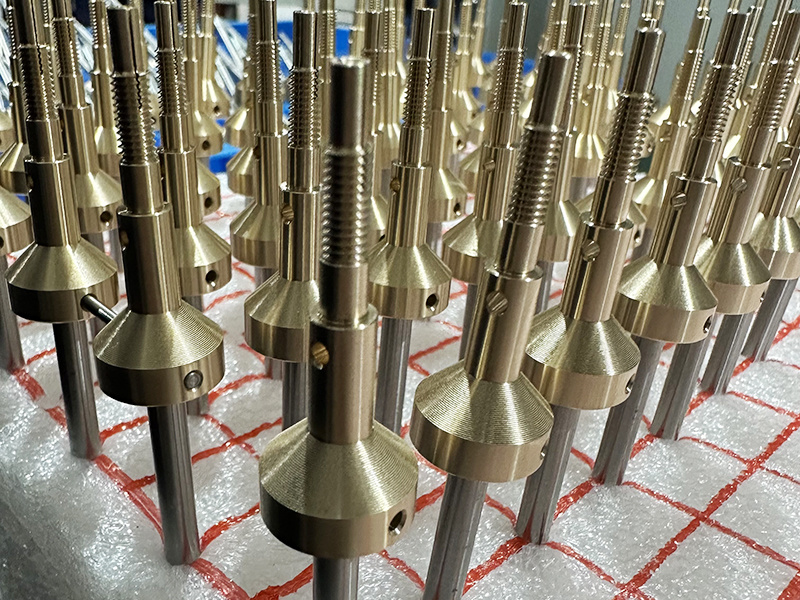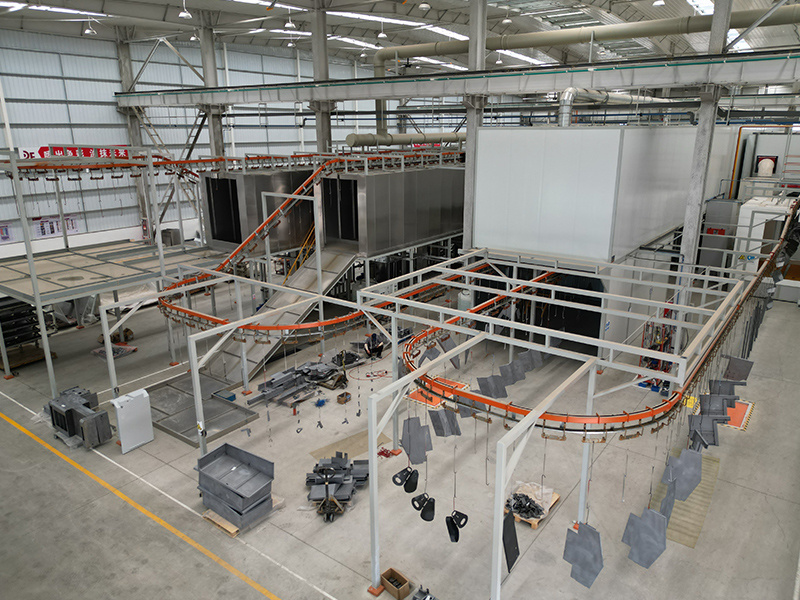What is electroplating processing for parts?
Release Time:
Jul 23,2024
Electroplating, as an indispensable surface treatment technology in modern industry, has a wide and far-reaching application. Electroplating technology covers the surface of metal or other conductive materials with a layer of metal or alloy to achieve various purposes such as protecting the substrate material, enhancing aesthetics, improving conductivity, and enhancing wear resistance. Below, we will delve into the definition, principles, applications, and important role of electroplating in modern industry.
Electroplating, as an indispensable surface treatment technology in modern industry, has a wide and far-reaching application. Electroplating technology covers the surface of metal or other conductive materials with a layer of metal or alloy to achieve various purposes such as protecting the substrate material, enhancing aesthetics, improving conductivity, and enhancing wear resistance. Below, we will delve into the definition, principles, applications, and important role of electroplating in modern industry.
1、 Definition of Electroplating
Electroplating, also known as electrolytic plating, is the process of using the principle of electrolysis to deposit a thin layer of other metals or alloys on certain metal surfaces. In this process, the plated metal serves as the cathode, and the plated metal or other insoluble material serves as the anode. It is placed in an electrolyte solution containing plated metal ions, and through electrolysis, the plated metal ions are reduced to metal atoms on the cathode surface and deposited on the cathode surface, forming a coating.
2、 The principle of electroplating
The basic principle of electroplating is electrolysis. During the electroplating process, metal ions in the electrolyte solution move towards the cathode under the action of an electric field and obtain electrons on the cathode surface, reducing them to metal atoms. These metal atoms continuously accumulate and adhere to the cathode surface, forming a metal coating with a certain thickness and density. At the same time, the metal or alloy on the anode dissolves under electrolysis, releasing metal ions to maintain a stable concentration of metal ions in the electrolyte solution.
3、 Application of Electroplating
The application of electroplating technology is very extensive, covering almost all industrial fields. The following are some of the main application areas of electroplating technology:
1. In the field of corrosion prevention: Electroplated coatings can serve as a barrier to protect the base metal from chemical corrosion, electrochemical corrosion, and other forms of damage, thereby improving the service life of metal products. For example, coating a layer of zinc or chromium on the surface of steel can significantly improve its corrosion resistance.
In the field of decoration, electroplating can give metal products a bright, smooth, and beautiful appearance, increasing the added value of the product. For example, plating a layer of gold or silver on jewelry, watches, eyeglass frames, and other products can make them more luxurious and noble.
3. In the field of electronics industry: Electroplating technology can form a layer of conductive metal film on the surface of conductors, which is used to make various electronic components and circuit boards. For example, coating a layer of copper or gold on a semiconductor chip can improve its conductivity and stability.
4. In the field of mechanical processing: Electroplating technology can form a coating with high hardness and good wear resistance on the surface of mechanical parts, improving the service life and processing accuracy of the parts. For example, coating a layer of hard chromium or nickel cobalt alloy on tools, molds, bearings, and other parts can significantly improve their wear resistance and service life.
4、 Development and Trends of Electroplating Technology
With the continuous advancement of science and technology and the rapid development of industrial production, electroplating technology is also constantly developing and innovating. Here are some development trends in electroplating technology:
1. Greening: With the continuous improvement of environmental awareness, the greening of electroplating technology has become an important direction for industry development. By adopting environmentally friendly electroplating materials, optimizing electroplating processes, and strengthening wastewater treatment, environmental pollution and resource consumption during the electroplating process can be reduced.
2. Intelligence: With the continuous development of technologies such as artificial intelligence and the Internet of Things, the level of intelligence in electroplating technology is also constantly improving. By introducing advanced technologies such as intelligent control systems and online monitoring systems, automation, intelligence, and precision control of the electroplating process can be achieved.
3. Diversification: With the continuous changes in market demand and the increase in personalized needs, the diversification of electroplating technology has become an important trend in industry development. By developing new electroplating materials, innovating electroplating processes, and expanding application areas, we aim to meet the diverse needs of different customers.
Key words:









